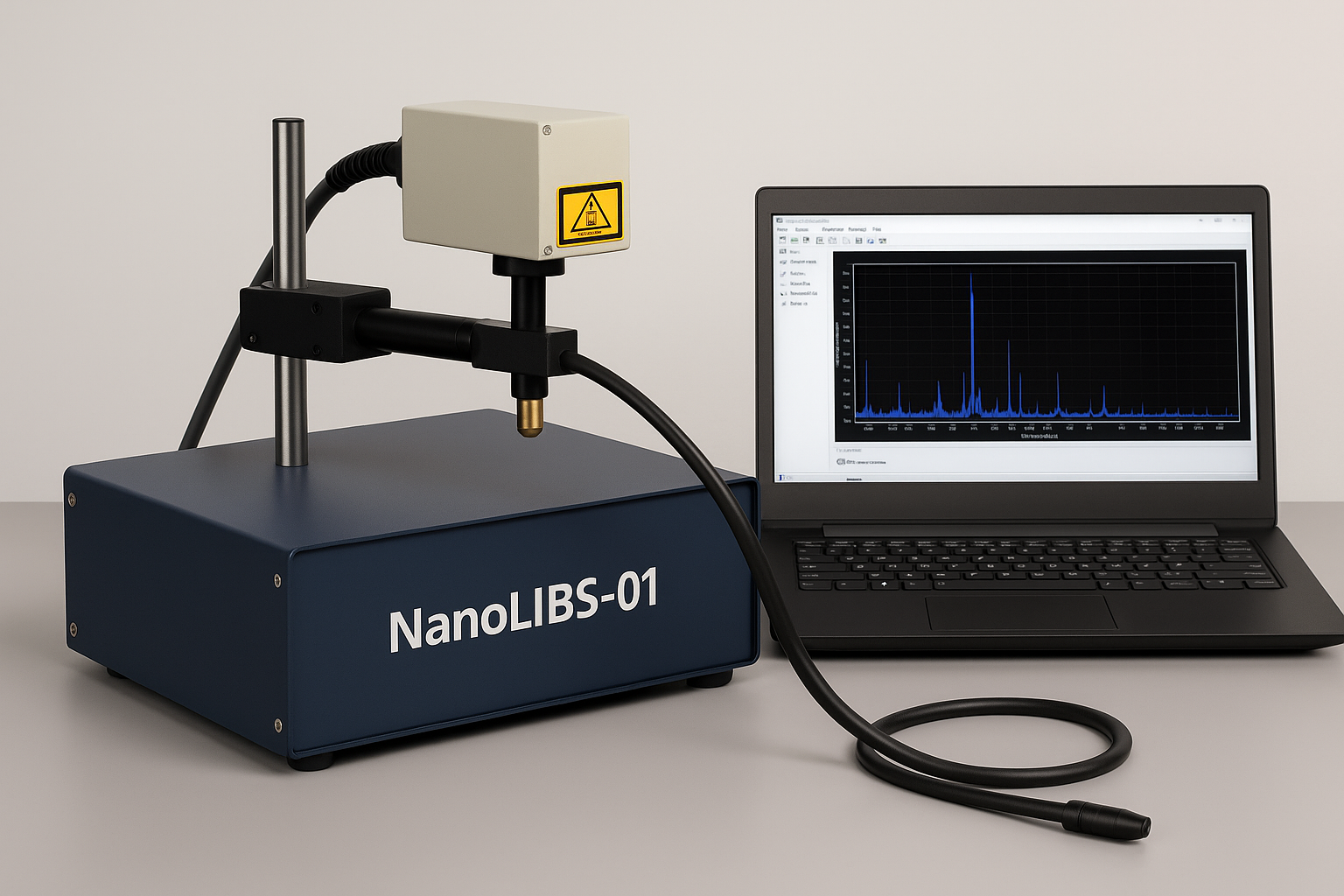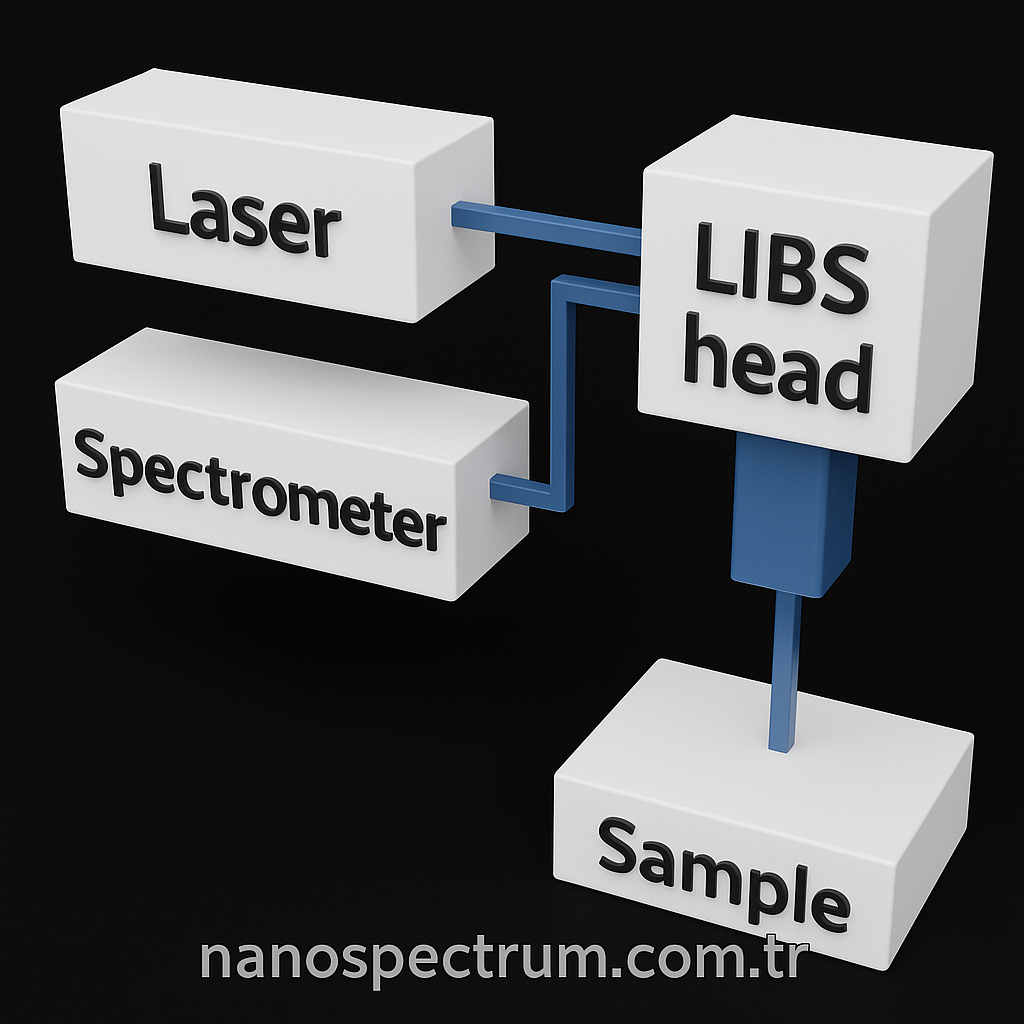Laser-Induced Breakdown Spectroscopy (LIBS)

Laser-Induced Breakdown Spectroscopy (LIBS) is a powerful technique for real-time, non-contact elemental analysis. By focusing a high-energy laser pulse on a sample, a microplasma is generated, and the emitted light is analyzed to identify the elemental composition of the material.
NanoSpectrum offers robust and customizable LIBS platforms tailored for both research laboratories and industrial production lines, supporting a wide range of material types including metals, ceramics, glass, and biological samples.
Core Advantages of LIBS
- Rapid multi-element detection in less than 1 second
- No sample preparation or contact required
- Works on solids, powders, and liquids
- Compact and portable configurations available
- Operable in air, inert gas, or vacuum environments
- Environmentally friendly alternative to chemical analysis
NanoSpectrum LIBS Platforms
- LabLIBS: Desktop system for research and academic applications
- LineLIBS: Inline monitoring for real-time industrial control
- NanoLIBS: Miniaturized portable unit for on-site analysis
- LIBS Trainer Kit: Educational version with guided experiment modules

Application Areas
- Metal alloy verification and trace detection
- Surface contamination analysis
- Mining and geological sampling
- Battery and semiconductor quality control
- Forensic and cultural heritage analysis
- Biological sample diagnostics (with proper calibration)
Technical Capabilities
| Laser | Q-switched Nd:YAG, 1064 nm, 10–100 mJ |
|---|---|
| Spectrometer | 200–800 nm, resolution < 0.1 nm (custom options available) |
| Detector | CCD / ICCD / CMOS configurable |
| Control Interface | Touchscreen + PC software + remote API |
| Data Processing | AI-enhanced peak matching, statistical validation, real-time feedback |